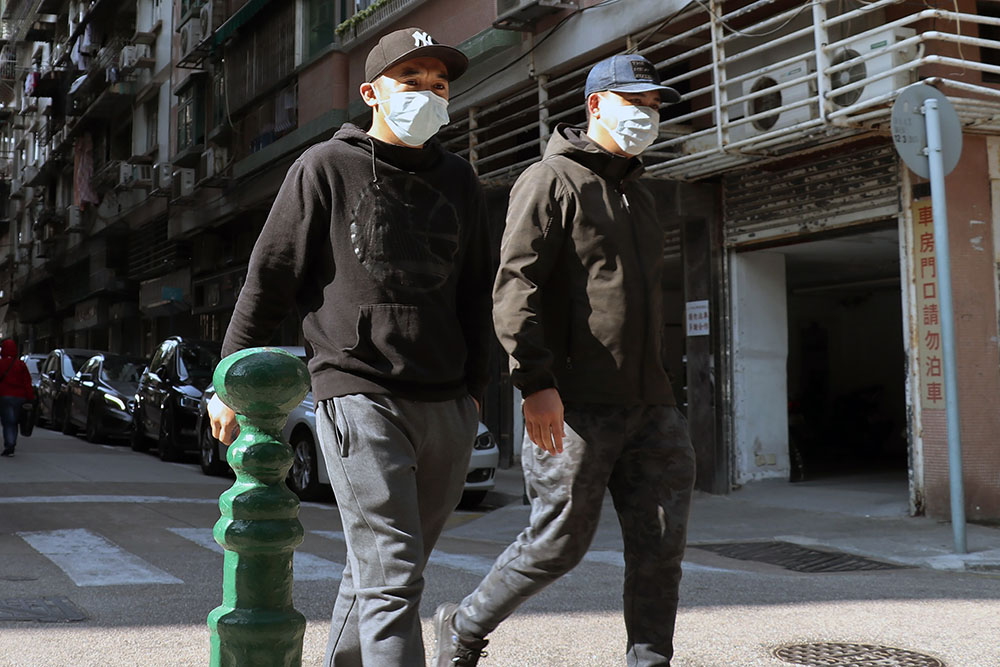In March, the Centers for Disease Control and Prevention listed three symptoms for coronavirus: coughing, shortness of breath and fever.
By June, the CDC’s list expanded to include fatigue, muscle or body aches, headache, new loss of taste or smell, sore throat, congestion or runny nose, nausea or vomiting and diarrhea.
Some of these symptoms can be attributed to different conditions. With flu, allergy and climbing seasons on the way, how do you make sense of all the symptoms?
Advice from the Experts
The American Medical Association advises physicians to “watch for patients presenting with fever or signs of lower respiratory illness — especially in those who may have been exposed to the virus. Decisions on testing may be made based on local epidemiology of COVID-19. Clinicians are strongly encouraged to test first for other causes of respiratory illness, including infections such as influenza.”
Looking at local epidemiology — evaluating the risk in your own community — is something you can do as well.
“We are in a phase of this pandemic where we have to balance a communitywide assessment of risk and our individual assessment of risk,” said Global Rescue Medical Director Dr. Claudia Zegans.
“Check the numbers of what is happening in your community, balance the data with your chance of exposure and use the information to guide your decision making.”
She provides an example using the rate of positivity, defined as the percentage of people who test positive for the virus out of those who have been tested.
“If your community has a rate less than 5%, it means there is little community spread of coronavirus and any outbreak can be quickly contained by maintaining health and safety practices,” Zegans said.
You can check the rate of coronavirus positivity numbers for your state using a tracker updated by Johns Hopkins University of Medicine.
In New Hampshire, where the positivity rate is less than 2% and in Vermont, less than 1%, those fall symptoms could more likely be related to an allergy, cold, flu or GI illness. But that doesn’t mean treating yourself automatically for whatever ailment you think you have.
“Given the current ongoing concern about control of COVID-19, you should consider being tested,” Zegans said. “Seek medical advice from a health care professional to determine the best course of action to get yourself back on the mend.”
With the coronavirus pandemic in the background this fall, travelers and non-travelers should be aware of seasonal ailments, such as influenza and seasonal allergies and their symptoms.
Influenza
Influenza viruses circulate year-round, but peak activity occurs at different times across the globe. The CDC notes the flu season runs from October to April in the Northern Hemisphere, April to September in the Southern Hemisphere and year-round in the tropics.
According to the CDC, “Influenza (Flu) and COVID-19 are both contagious respiratory illnesses, but they are caused by different viruses. COVID-19 is caused by infection with a new coronavirus (called SARS-CoV-2) and flu is caused by infection with influenza viruses.”
Because some of the symptoms of flu and COVID-19 are similar, it may be hard to tell the difference between them based on symptoms alone. Contacting your primary care physician will be important, and testing may be needed to help confirm a diagnosis.
Overall, it is best to remember that the flu virus is fast — symptoms will show up in one to four days after infection— and there are antiviral drugs available. Coronavirus takes longer, seven days or more, and there is currently no vaccine or standard treatment.
With COVID-19 continuing to surge, the AMA states “it will be more important than ever to vaccinate patients against the flu to reduce the number of people using the nation’s health resources that are so heavily taxed during the pandemic.”
“The more people we can get vaccinated and protected and get them out of the health care system, wonderful,” said L.J. Tan, chief strategy officer of the Immunization Action Coalition. “That’s one less diagnostic criterion that we can look at as people come in with respiratory illness.”
Allergy Season
According to the American College of Allergy, Asthma and Immunology, allergy symptoms occur when your immune system overreacts to something harmless to most people but triggers a reaction in anyone sensitive to it.
The symptoms of that reaction can be similar to coronavirus, including shortness of breath, cough, fatigue and headache. You’ll know it is more likely allergies when you have a runny nose, itchy eyes and frequent bouts of sneezing.
It is an easy call to your primary care provider to confirm the local allergy season and seek appropriate treatment. For example, if you are allergic to ragweed, a wild plant prominent in North America, you’ll be aware September is typically a hard month for you because that is when it releases most of its pollen.
Anxiety and Stress
It’s no surprise: emotional distress and anxiety are common during pandemics. Anxiety, specifically generalized anxiety disorder, can result in physical symptoms such as fatigue, shortness of breath, headache and nausea — symptoms which may overlap with coronavirus.
“The rates of depression, anxiety, substance abuse, domestic violence and all mental health issues have been greatly exacerbated by this pandemic and the stress surrounding it,” said Dr. Bill Brandenburg of Wander Medicine and Global Rescue Safe Travel partner. “I see more admission related to these issues than COVID-19 in the rural hospitals where I work.”
Touching base with your doctor is important. Health care professionals are trained to look for signs of stress and anxiety and it is part of a standard patient/physician visit. The American Medical Association recommends physicians help patients recognize stress and help them normalize it with basic strategies: exercise, healthy diet, keeping a schedule and meditation, to name a few.
If you are looking for additional resources, try the National Institute of Mental Health’s page of shareable resources on coping with COVID-19 or these tips for talking to your kids about coronavirus, which has insight for mitigating anxiety.
Acute Mountain Sickness
While climbing, acute mountain sickness (AMS) can strike at any time, in any level of severity, because everyone acclimatizes to elevations differently. If you ignore the signs and keep climbing to elevations of over 2,440 meters (8,000 feet), AMS complications can include high-altitude pulmonary edema (HAPE).
HAPE is when the vessels in the lungs constrict in response to the low-oxygen environment. Fluid leaks from the blood vessels into the lung tissues and accumulates, causing a life-threatening situation for otherwise healthy people.
Symptoms feel like a bad hangover: headache, dizziness, shortness of breath, trouble sleeping. As the condition worsens, so do the symptoms: nausea and vomiting, fatigue or weakness, reduced exercise tolerance and a nonproductive cough.
With a coronavirus pandemic in the background, this is where diagnosis gets tricky. The American Thoracic Society warns “the compelling need to quickly identify treatment options [for COVID-19] … have led to erroneous and potentially dangerous comparisons between COVID-19 and other respiratory diseases like HAPE.”
Supplemental oxygen will improve both HAPE and COVID-19, according to a report published in High Altitude Medicine & Biology, but it won’t remove the inflammation from coronavirus. And that inflammation won’t just be in the lungs, but throughout the body — any internal organ is at risk.
Coronavirus presents differently in each person and physicians will prescribe treatments for excessive inflammation, such as hospitalization, assisted ventilation and steroids.
How Global Rescue Can Help
Travelers this fall will want access to Global Rescue travel health protection services, to provide rescue from the point of illness or injury for any serious medical emergency.
Even if you are traveling relatively close to home or climbing in a remote destination, membership provides access to destination reports and event alerts, including coronavirus hotspots, as well as medical advisory services.
Add on a TotalCareSM membership and you’ll have immediate access to a team of medical experts for real-time video consultations and treatment — right from your hotel room, living room or base camp.









